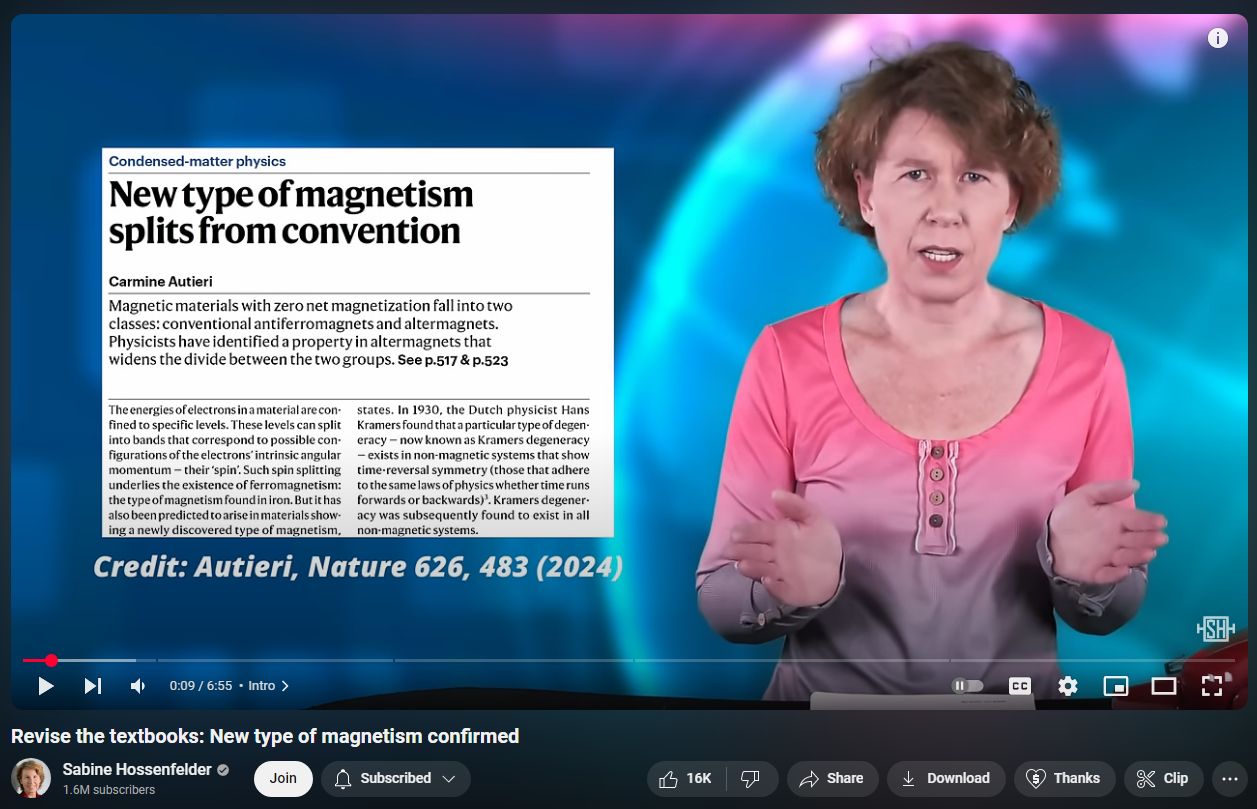Altermagnetism the new form of Magnetism
An electron has never been photographed or seen directly, by anyone, anywhere, ever. This is all 100% TOTAL ABSOLUTE THEORY — and Jesuitical theory at that. Jesuits were formed and literally exist to “counter” Protestant Reformation and all non-Catholic “heretics”. This is inescapable. Nevertheless, they have (for too long) been “in charge” of “higher” education. It is vital to consider a person’s fundamental beliefs in understanding their motivation and drive, intentions and actions.
Altermagnetism is an emerging form of magnetism that combines characteristics of both ferromagnetism and antiferromagnetism. In altermagnetic materials, electron spins align in an antiparallel fashion, similar to antiferromagnets, resulting in zero net magnetization. However, due to specific crystal symmetries, these materials exhibit spin-split electronic band structures, leading to properties typically associated with ferromagnets, such as spin-dependent phenomena. (en.wikipedia.org)
The concept of altermagnetism was first theorized in 2019 and experimentally confirmed in 2024. Researchers have identified over 200 potential altermagnetic materials, ranging from insulators and semiconductors to metals and superconductors. This discovery opens new avenues in the field of spintronics, offering the possibility of developing faster and more energy-efficient electronic devices. (phys.org)
Recent studies have provided direct experimental evidence of altermagnetism. For instance, researchers from the University of Nottingham utilized advanced microscopy techniques to image and control altermagnetic ordering in manganese telluride (MnTe). Their findings demonstrated the unique spin-symmetry properties of altermagnets and highlighted their potential applications in high-speed, low-energy spintronic devices. (nature.com)
The unique combination of zero net magnetization and spin-dependent properties in altermagnets makes them promising candidates for next-generation electronic devices. By leveraging the advantages of both ferromagnetic and antiferromagnetic materials, altermagnets could lead to significant advancements in data storage, processing, and other technologies reliant on magnetic properties.
To resolve some of the confusion, the term “magnetism” is used in essentially two different ways: (i) to classify how a material reacts to an externally applied magnetic field and (ii) spontaneous magnetic ordering (symmetry breaking). As for (i) there is indeed mainly paramagnetism, diamagnetism, and ferromagnetism. Now comes the confusing part: while paramagnetism and diamagnetism are quite easily understood and explained in elementary textbooks (Pauli spin paramagnetism and Landau orbital diamagnetism), already ferromagnetism is much more complicated and belongs to class (ii) of spontaneously symmetry-broken phases of matter. Most condensed matter physicists don’t think of para- and diamagnetism as “magnetism” but only think of (ii) — and now there are many different types of magnetic ordering indeed. The main ones are (1) ferro and (ii) antiferro, hence the use of “third” type of magnetic order for altermagnetism. But then there is ferrimagnetism (essentially a version of antiferro…) but also spin spirals, multiferroics (magnetism intertwined with ferroelectric ordering), and an entire zoo of more exotic magnetic orders. So, yeah, as always, it’s complicated (and rich and very interesting).
https://www.youtube.com/watch?v=D0st_6sE7Bk
I recently saw press releases saying that physicists had found a new, third type of magnetism called altermagnetism. But didn’t we already have three? What’s different about this new one? I had a look at the paper.
https://www.science.org/doi/10.1126/sciadv.adj4883
ABSTRACT: Altermagnets are an emerging elementary class of collinear magnets. Unlike ferromagnets, their distinct crystal symmetries inhibit magnetization while, unlike antiferromagnets, they promote strong spin polarization in the band structure. The corresponding unconventional mechanism of time-reversal symmetry breaking without magnetization in the electronic spectra has been regarded as a primary signature of altermagnetism but has not been experimentally visualized to date. We directly observe strong time-reversal symmetry breaking in the band structure of altermagnetic RuO2 by detecting magnetic circular dichroism in angle-resolved photoemission spectra. Our experimental results, supported by ab initio calculations, establish the microscopic electronic structure basis for a family of interesting phenomena and functionalities in fields ranging from topological matter to spintronics, which are based on the unconventional time-reversal symmetry breaking in altermagnets.
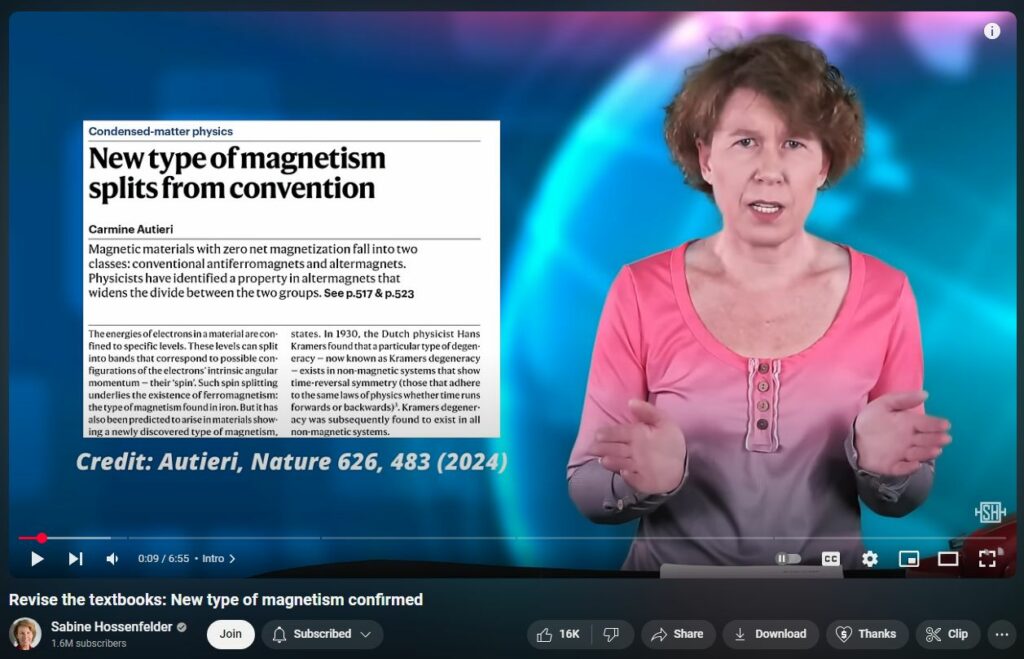
FERRO MAGNETISM
Depending on the construction, shape, geometry, crystalline structure, treament (heat, surface, impact), some types of steel are magnetic, others not (stainless steel is sometimes not); sometimes, magnetism varies along / in the material itself.
https://en.wikipedia.org/wiki/Ferromagnetism
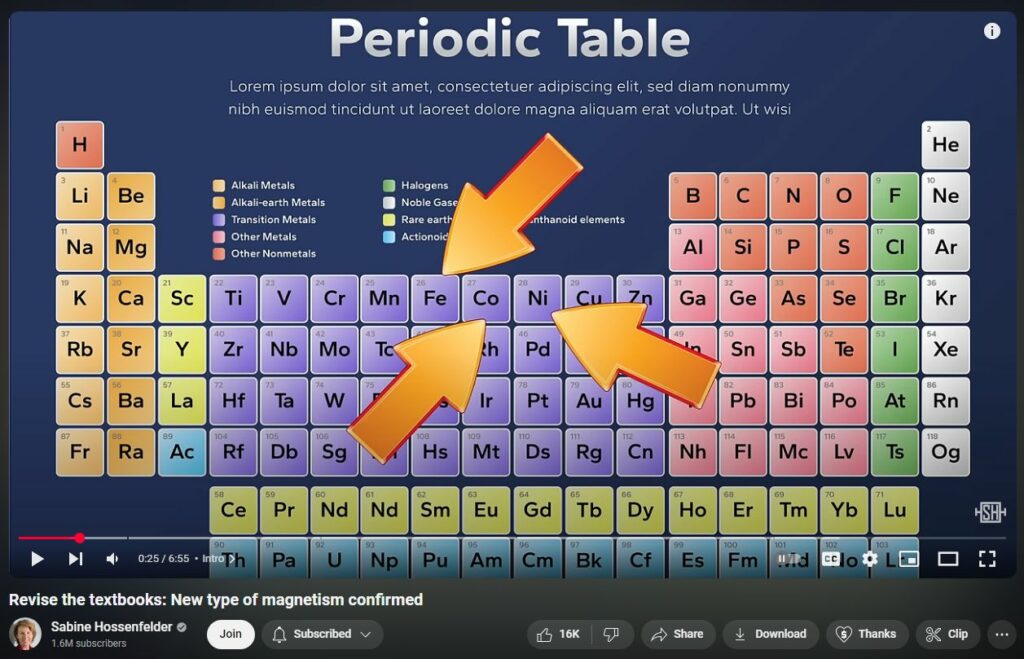
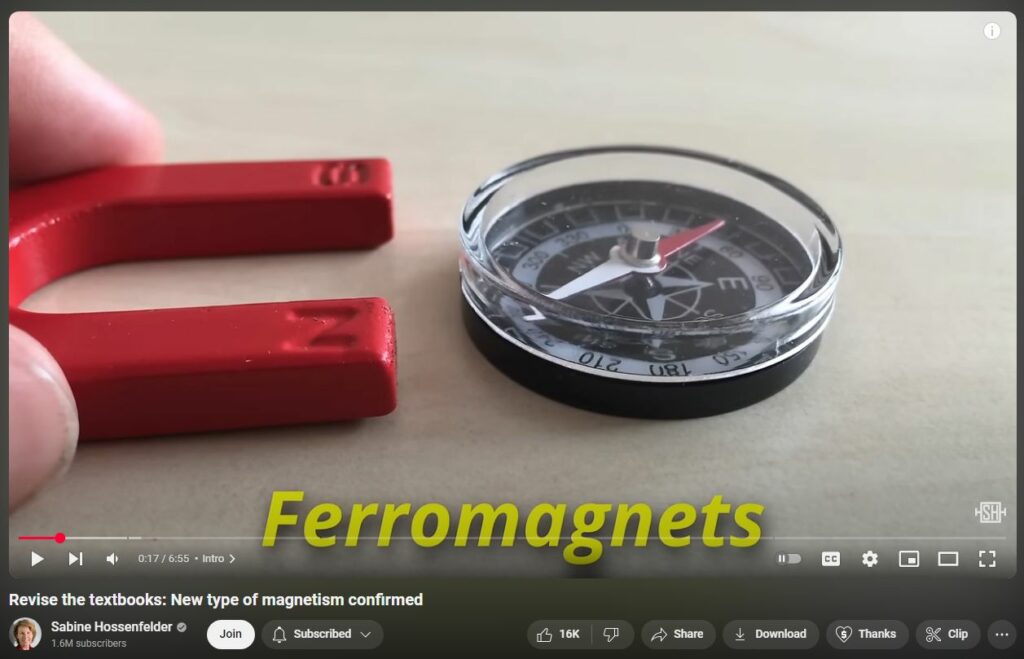
DIA MAGNETISM
React to magnetic fields by repulsion. Water is repelled by magnetism.
https://en.wikipedia.org/wiki/Diamagnetism
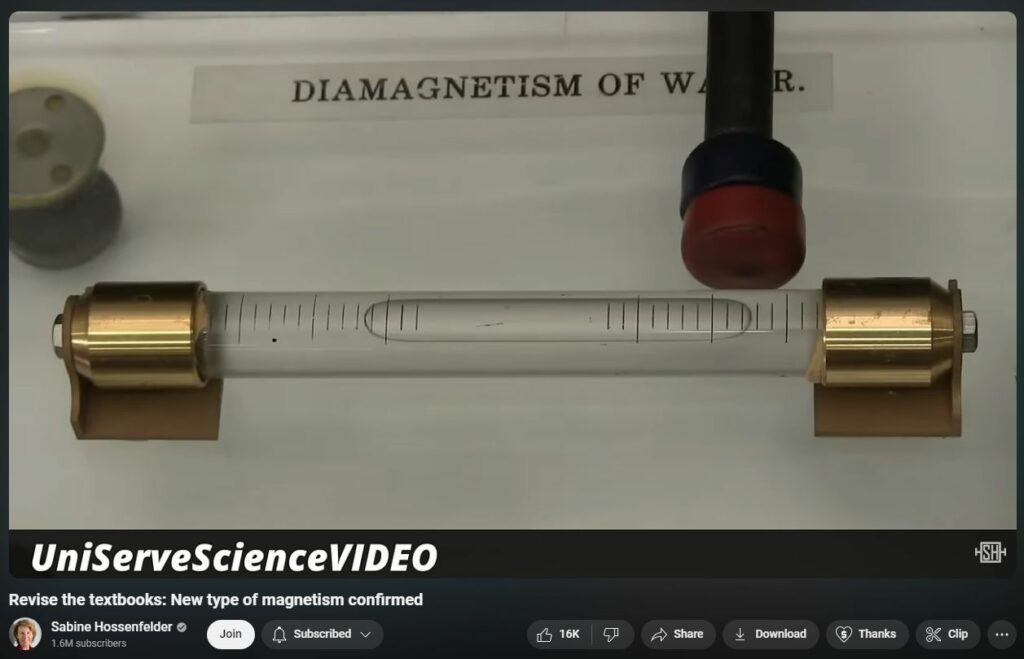
PARA MAGNETISM
Attracted to, rather than repelled by magnetic field. They can be magnetized. Their (theorized) “magnetic moments” of atoms can be aligned and then hold the new alignment.
https://en.wikipedia.org/wiki/Paramagnetism
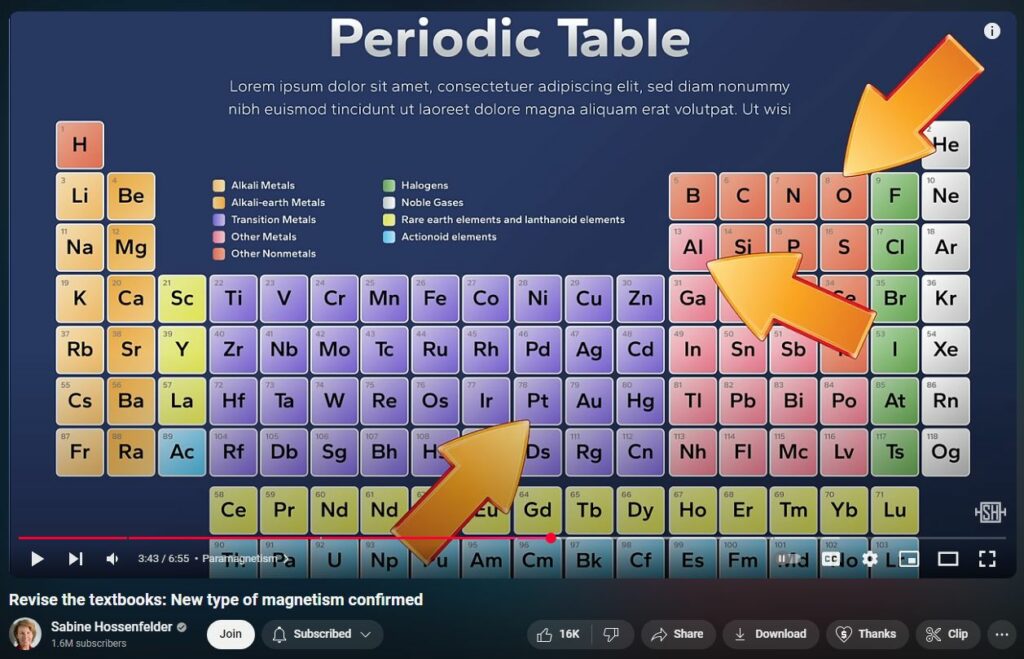
ALTER MAGNETISM
https://en.wikipedia.org/wiki/Altermagnetism
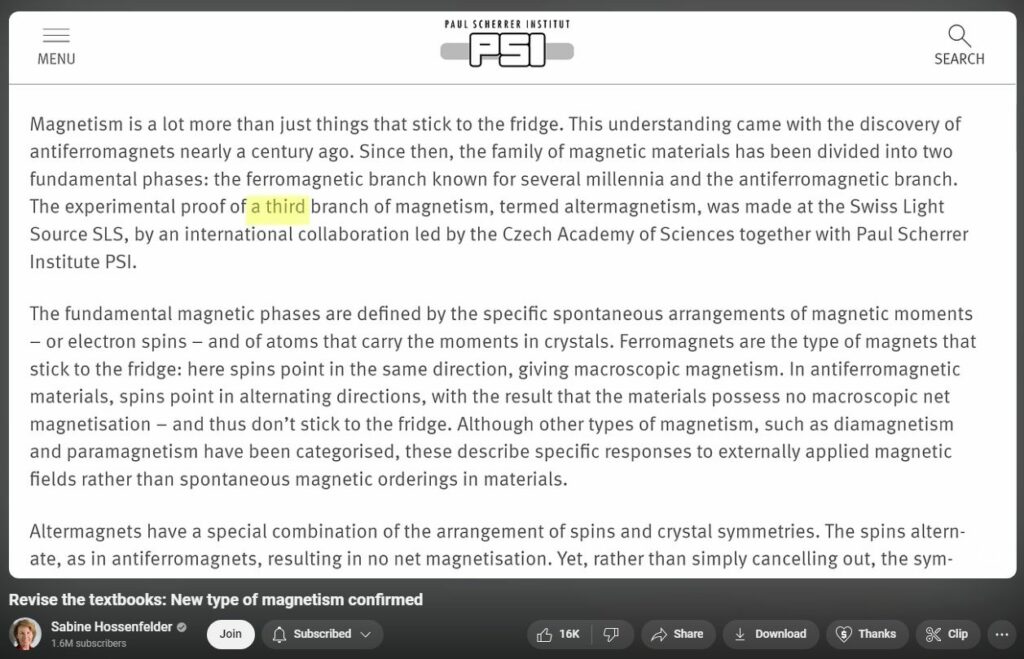
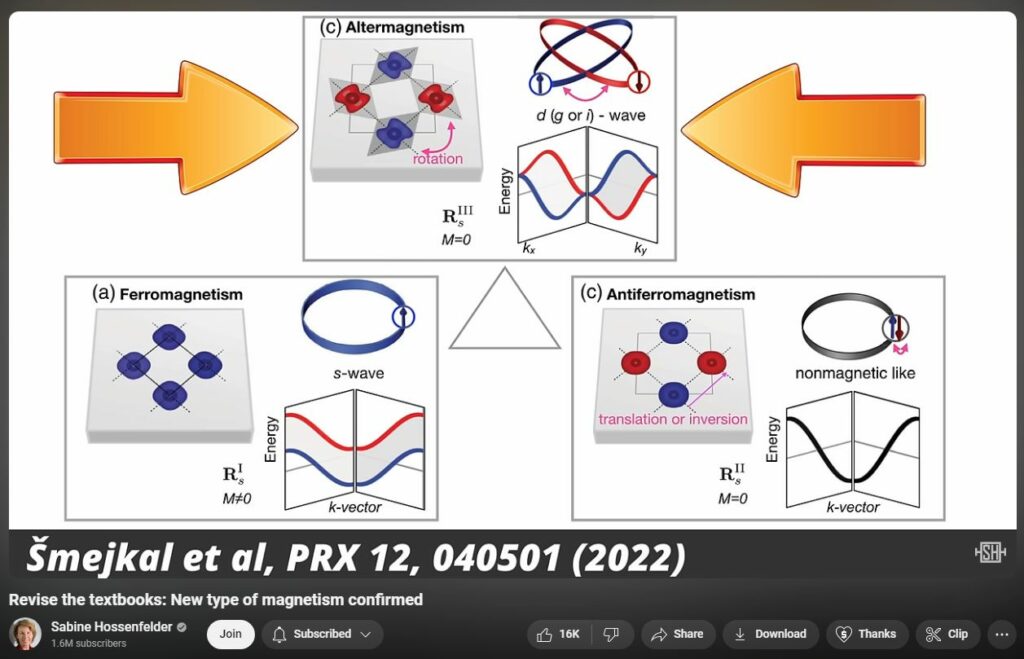
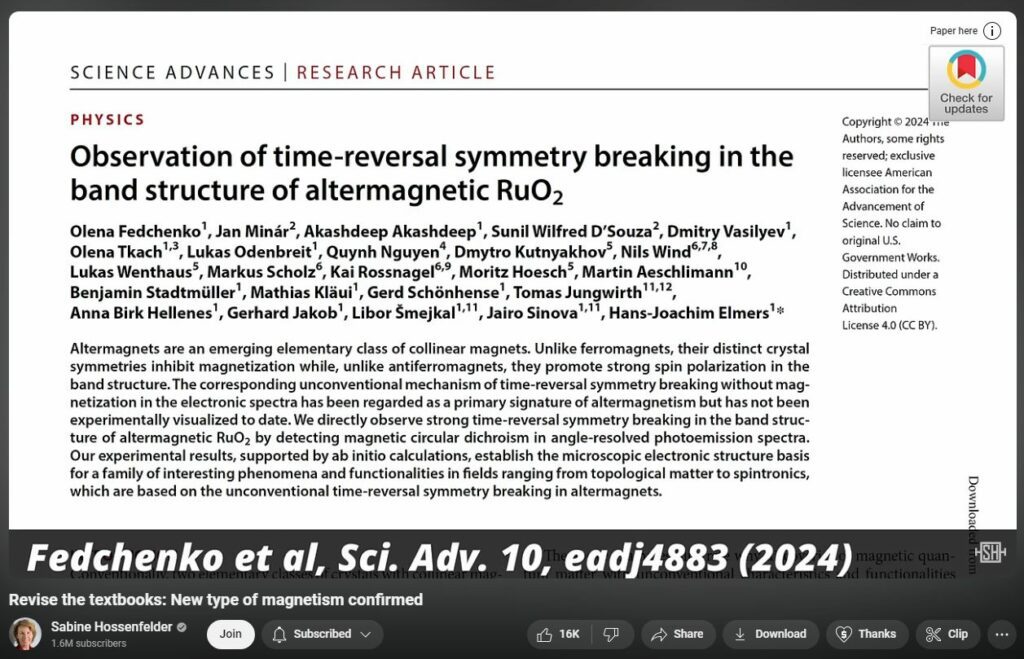
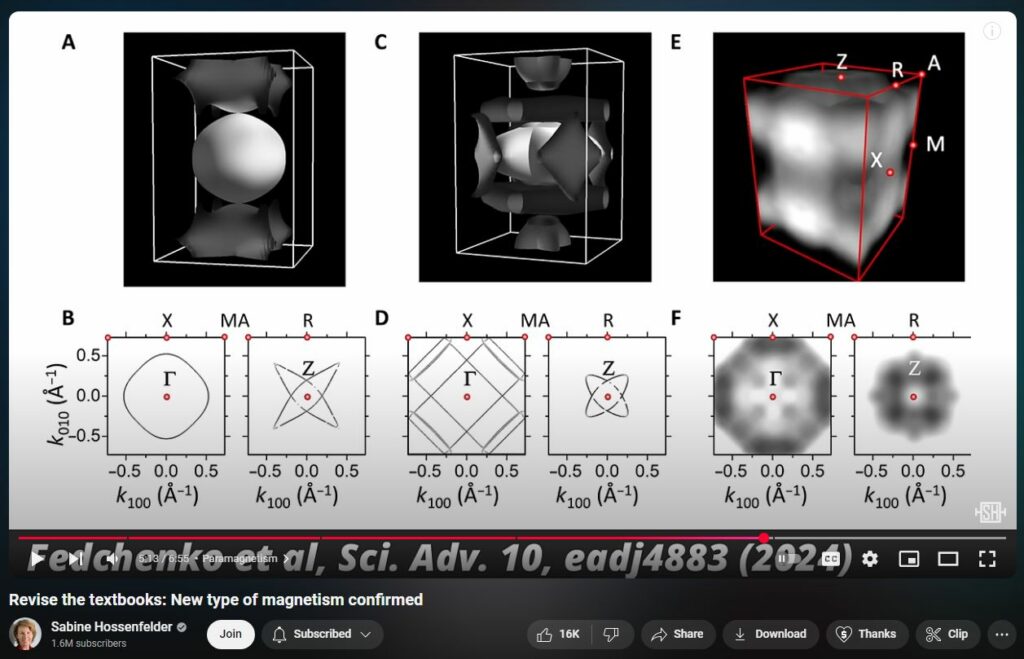

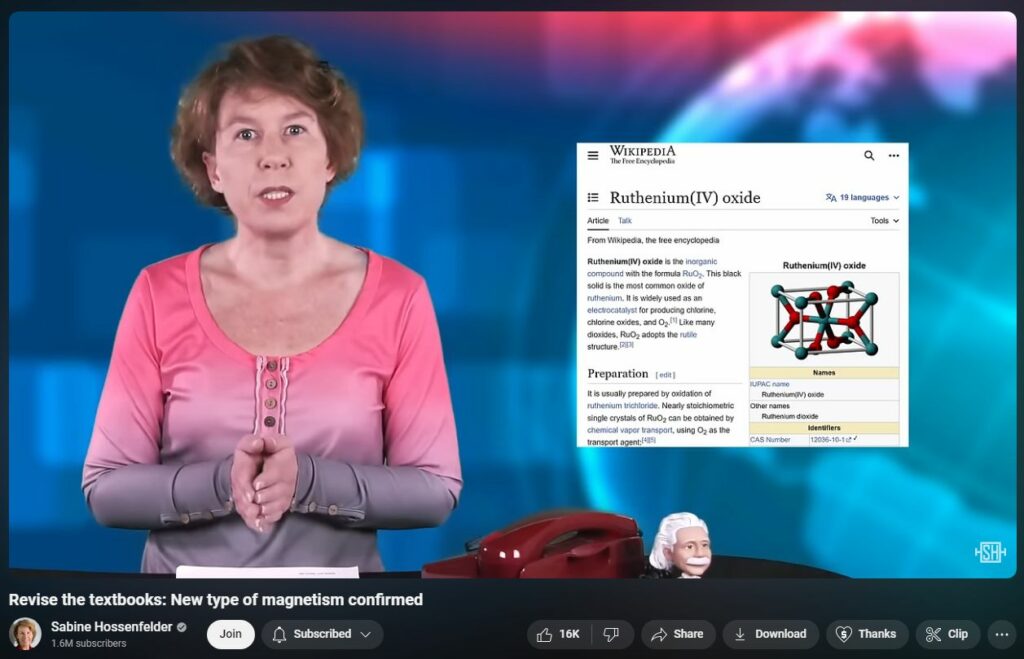
Other Magnetisms
There are lots more “magnetisms”:
• helimagnets (magnetic moments arrange themselves into helical repeating patterns)
• ferrimagnets (mentioned at the end, in which moments are antiferromagnetically coupled, but because there are at least two different kinds of magnetic ions, the net magnetization for a macroscopic sample isn’t zero because the moment cancelation of the moments isn’t complete)
• Pauli paramagnetism (the small net magnetism in a metal’s conduction electrons induced by an applied magnetic field – ‘up-spin’ and ‘down-spin’ conduction electron populations are slightly imbalanced) … and many more complicated and more arcane things.
In short, the textbooks are already full of many of these … it’s very doubtful that this ‘altermagnetism’ will lead to revisions – and it isn’t even clear that this is really phenomenologically distinct from existing stuff.
Excellent Comments
Conductors not necessarily magnetic
Just a couple years ago I was trying to pick up a coil of copper with a ferro magnet and I was perplexed that it didn’t work. I had been working with electricity and magnetism for decades and somehow I didn’t know that copper wasn’t magnetic.
Yep, interesting that magnetism has nothing to do with conductivity.
That makes no sense since the electron is supposed to be the central figure in both conductivity and magnetism so somehow it’s both based on electrons yet one has nothing to do with the other.
If you run a current through the copper it will acquire a magnetic field and then it can attract.
Conductivity is about free electrons, while magnetism is about bound electrons.
Copper is paramagnetic.
For conductivity, it’s important that electrons can freely move around. For (ferro)magnetism, it’s important that the spins of the electrons are parallel to each other. These are two quite different requirements for what the electrons have to do.
Yes, but that is a limitation ONLY IF you assume different electrons are not at work simultaneously in each atom. Rare Earth elements have their special properties exactly because they have more going on than just what the outermost electron does. That is also why they are a terrific pain in the butt to separate into pure forms after initial ore refinement into the mixed rare-earth element form.
Every material is at least diamagnetic. There can be stronger collective ordering such as ferromagnetism on top, but if you take the bare elements they are always diamagnetic. It’s something like a Lorentz rule back action argument from the electron movement within the magnetic field. By the way, would be great to see a video on “Magnonics”, which is the research field that is actually dedicated to using magnets (spin-waves) for information processing!
I was a Scout as a kid, and I had a Silva hiking compass. When I graduated from high school I put it in one of those metal cookie tins, along with a bunch of other junk, and didn’t open the tin for twenty years. When I did it pointed south. Or, rather, it pointed south if I tilted the base of the compass so the needle would swing freely. Compass needles align with the Earth’s magnetic field, which is not parallel to the surface of the Earth. In the northern hemisphere needles would point north and down, except that the needle is weighted on the south end to make it level. With the magnetism of the needle swapped, the counterweight was working against the tilt, not with it. After a couple of months of being outside the tin, the magnetism switched, again, and the needle started pointing north.
The original spelling was feromagnetic with one “L” from the latin “fero” to carry. There are three metals which can be magnetised: iron, cobalt and nickel. not just iron. Over the years, I have observed, that it has been corrupted to ferro, where people thought it was connected to the latin for iron “ferro”.
Ferromagnetism, ferrimagnetism, antiferromagnetism, dimer networks, valance bond crystals, helical order, skyrmions, spin liquidsetc etc. You could find dozens if not hundreds magnetic states of matter that have been described.
My understanding of the levitating frog was not that the water is diamagnetic, but that the ferromagnetic iron in the blood does mini current loops that themselves behave diamagnetically on the macro scale. What’s the truth?
Wondering if the frog may have been taken from Maryland’s Potomac River, which was found years ago to have been contaminated under the Governor EHRLICH regime with endocrine disruptors that caused male frogs to become female. EHRLICH some may recognize is the same name of two co-authors (along with Obama’s science czar, JOHN HOLDREN) of the 1,400 page textbook ECOSCIENCE which describes how to depopulate / mass sterilize humans via poisoned public water supplies.
When I was studying magnetism I learned that it is quite complicated, so having just 3 types of it is a very simplified picture. I remember dia-, para-, ferro-, ferri-, antiferro- magnetisms. That is at least 5 and now you’ve mentioned the sixth. I also remember something about Majorana fermions, Cooper pairs and Josephson junctions… Then people were showing off some ridiculously fast and efficient classical computers based on some quantum effects. Something RSFQ something. I also remember someone was explaining Abrikosov vortex to me. I also learned that magnetic fields can be used to suck entropy from things effectively cooling or unmixing them. Oh and there was a demo how magnets crush human bones. Desceptively simple, yet one of the most complicated things I ever attempted to master. And the final bit was that ALL magnetic effects(including spin itself) are purely relativistic. When the speed of electric interaction propagation aka speed of light goes to infinity the magnetic field is GONE. BTW, what happens in a thin layer of some conducting materials under high magnetic field(tens of of Teslas) under low temperature when the angle of the field slowly changes, well, it makes people quit. Honestly, it should not be called magnetism, it should be just called MAGIC.
“Curie Point” is the temperature at which the molecular alignment in a magnetic material is disrupted and becomes random thereby causing the loss of the magnetic field.
Still, none of that explains why magnets attract or repel, does it? Alignment is terrific to know, but I can align a garden hose and it won’t attract the cabbage and carrots. There must be a parasite drag that persists even after electron flow is established. And in reverse, the same resistance to the current moves the object away? Circuits get hot in resistance, is that noticed in magnetic motors? If so, is that inhibition directed perpendicular to the flow, or only parallel or otherwise in wiggling around the elements? Sabine might explain how that all works?
This is similar to the question of how many different states of matter exist (it’s in fact a subquestion). Ask any physicist and you will get a different answer each time. Wikipedia has a list of states of matter, and lists already eight different ones for magnetism.
I think there is actually only one type of magnetism, the nanoscopic dipoles (usually, spins) which constitute the primitives of basically all of these types of magnetic behavior. What we’re really talking about in each case is how those dipoles’ alignments are distributed, and whether or not they have and/or keep their macroscopic properties as as result. So maybe we have 6 types of macroscopic phenomenon, but not 6 types of magnetism.
Please make a video on Townsend Brown and his revolutionary work on magnetism
HUTCHISON EFFECT is apparently achieved via microwave RF radiation emitted into a standing high-voltage gradient field along with particle emission from low-level radioactive source (cesium, etc). DR JUDY WOOD evidences a possible inter-molecular self-repulsion can be triggered, with effects lasting beyond field exposure — this would explain, if the WTC and Pentagon and Murrah OKC building had indeed been attacked by exotic weaponry, the need for water features common at all sites.
Take a strong magnet about the diameter of a quarter and about a half inch thick and color one side then set it in the palm of your hand and toss it without trying to spin it. Then flip it to the other side and toss it up without trying to spin it.
So if you approach a magnetar slowly, will the magnetic field repel the water molecules in your body more strongly than the magnetar’s gravity will pull you in? Which force affects you at the greater distance? Maybe it would just rip the iron out of your blood and leave the rest of you.
In your discussion of paramagnetism, you should mention water; the nuclear paramagetism of water is the property that makes MRI possible.
Also would love to see a video on DNA Drives, or molecular computing, very interesting stuff, Microsoft and other major players in the tech industries are already using them to store digital information, decoders and encoders for existing digital media already exist. ( 1g of DNA = 445 Exabytes )
There were 5 types of magnetism, now 6. Ferromagnetism, Diamagnetism, Paramagnetism, Antiferromagnetism, Ferrimagnetism, and now Altermagnetism. These different types of magnetisms all interact through the same magnetic field. Magnetism is purely the alignment of electrons that allow their electrical orientations to allow energy to push or pull and create magnetic fields. Alter magnetism isn’t really a discovery of a new kind of magnetism, like electro magnets. It’s more about the discovery of the atomic alignment of the electrons. There are probably countless other types as these are merely predictable configurations of electrons. It’s not a new discovery like heat magnetism or radiation magnetism. This has more to do with deriving signals from an object due to alternating its magnetic field.Read more
Did you know that, besides the electric and magnetic fields (which are both vector fields), there actually exists two additional fields, which are not generally known. They are both scalar fields, the scalar magnetic field and the scalar electric field. The scalar (magnetic) field has now been experimentally verified. The scalar electric field is still theoretical and detecting it appears quite difficult at this time.
Dia- and paramagnetism is a can of worms. As compared to the other types of magnetism you mention, they are just bulk properties derived from atomistic properties dia- and paramagntism. Now in fact I found you could do a better job to sort out these two. Hint: I would go for stating that there are first order magnetic moments and second and higher ones, in fact both can come in dia or para fashion. First order arise from permanent magnetic moments of the electrond being spin or angular momentum. Higher order from electronic response of the wave function of closed singlet cases like frogs. However also these are at times paramagnetic. Chemists see that in antiaromatic molecules.
Just some food for thoughts: paramagnets and anti/ferromagnets are not really different materials, but different magnetic states. Heat iron up, and it will become paramagnetic. Btw Sabine, I work at PSI in the field of magnetism. I’m glad to help if you need consulting in the future (Flaviano dos Santos). Last comment, I promise. The magnetic moments in antiferromagnets are typically strongly couples, just like in ferromagnets. It just so happen that they want to be antiparallel instead of parallel to each other.
Different observable properties of magnetism don’t really deserve to be called different magnetism’s. splitting hairs here. Rather, the observed properties are a function of different material properties interacting with magnetism. Maxwells equations should help? This is like saying DC electricity is different from AC electricity when in fact it is just a different way of vectoring unit charge. The properties of unit charge remain the same but the fundamental interaction gives rise to a different geometry of behaviour.
